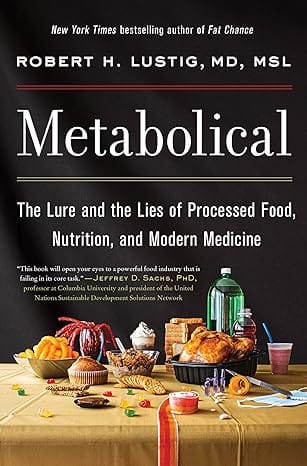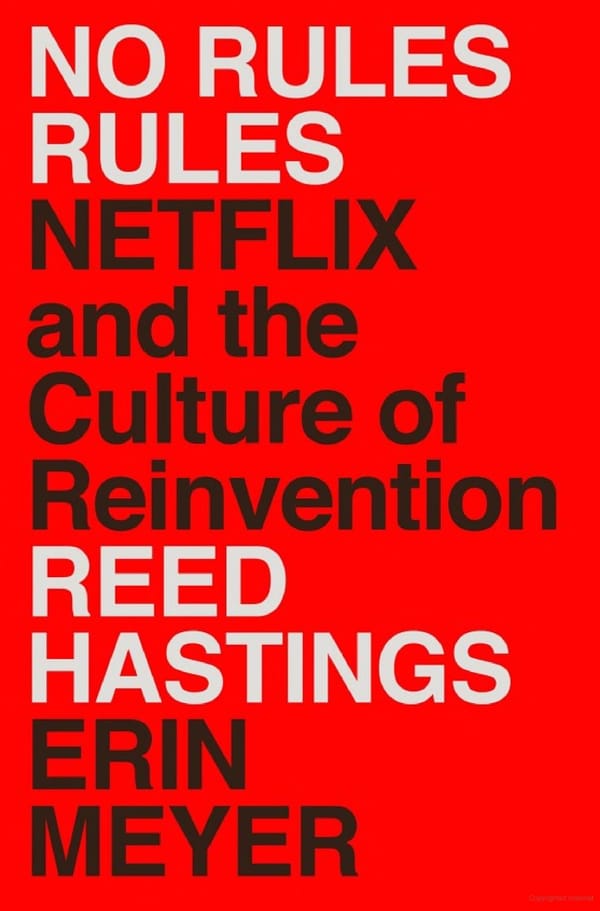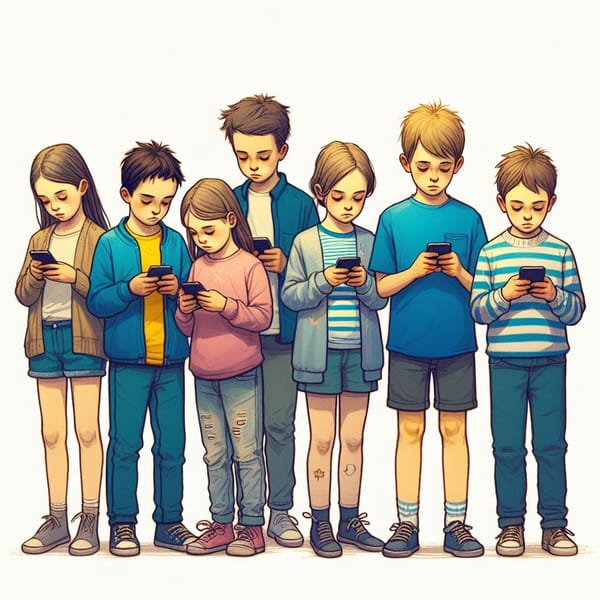Decision Making in Life -- Clear Thinking
How do you make the most important decisions of your life? Shane Parrish's Clear Thinking gives us some structure to do this.

Making good decisions is the key skill to living a good life. How do you make decisions to effectively pursue your goals? How do you decide what is worth pursuing? Do you get better over time? The compounding effect of making better decisions can be transformational in life. Many of the most important decisions I made in life did not follow this kind of framework, but I wish they did.
Shane Parrish’s Clear Thinking is a great resource for this. Part one focuses on the idea of positioning–to get yourself ready to make the best possible decisions. Part two is about how to actually make decisions effectively, and the last part of the book discusses the question “what is worth pursuing?”
Something that jumped out to me from part one – positioning: the concept that everything you do sets you up to make future tasks easier or harder. The most basic idea here is to ask yourself if you’re taking care of yourself–sleep, exercise, eating well–in order to make the rest of your life easier.
The next major lesson in part one concerns the idea of interrupting the action-to-reaction loop by inserting judgment, interrupting one of the major ways in which poor decisions are made. This is impossible to do all of the time. Still, there is tremendous benefit to trying.
There are four defaults that get in the way of clear thinking:
- the emotion default–responding with feelings instead of reason
- the ego default–responding (emotionally) to threats to self-worth or status
- the social default–conforming to the norms of the social group
- the inertia default–doing things because we do them by habit
I’ve seen all of these defaults interfere with success. Perhaps the hardest to recognize is if you, yourself, are doing any of these. For example, the inertia default has the well-known sunk-cost fallacy as one version. There are many other cognitive biases that fall under these categories.
And there are four strengths that can improve clear thinking:
- Self-accountability–holding yourself accountable for developing your skills and demonstrate ownership over your outcomes
- Self-knowledge–knowing your own strengths and weaknesses
- Self-control–mastering your fears, desires, and emotions (and doing the thing you need to do, especially if you don’t feel like it)
- Self-confidence–trust in your own abilities and the value you provide to others
I cannot emphasize enough just how important all of these are, starting with self-accountability. I think of that as the cornerstone to getting better. If you get that right, the others will follow. If you believe someone else is in charge of your growth, you are hoping they care about your growth and direction as much as you do.
Once you’ve mastered these fundamentals, you’ll be set up to make better decisions.
Parrish defines the decision making process in a few key steps: define, explore, evaluate, execute, and learn.
- Defining the problem (or decision) is non-trivial and often overlooked. You need someone to take responsibility for defining the problem and to specifically focus on that. Without clarity, you may attempt to solve the wrong thing and make a poor decision.
- Exploration concerns thinking through all of the possible solutions. Don’t settle for binary outcomes. Be wary of opportunity costs. Pre-mortems and second-level thinking (and then what?) can help you think through these options.
- Evaluation is about defining the criteria for evaluation and then applying them. If you don’t know what you value, it’s very hard to run a proper evaluation (or run a team). When getting information from experts, try to ask them how they think instead of what they think. This will give you more insight into the decision-making process.
- Execution is about when and how. If the decision is reversible or low-consequence, then you should do it as soon as possible. Margin of safety and experimentation can help here. For example, instead of going straight to medical school, shadow a doctor for a day. Trying living with a decision (sleeping on it) for a day or two before fully committing.
- Learn. Take what you decided and try to do better next time. This includes making a decision log. Don’t forget that luck plays a role in life.
Defining, exploring, and evaluating are all aided by having a rich set of mental models to draw on. Charlie Munger’s advice:
You must know the big ideas in the big disciplines and use them routinely—all of them, not just a few. Most people are trained in one model—economics, for example—and try to solve all problems in one way. You know the old saying: to the man with a hammer, the world looks like a nail. This is a dumb way of handling problems.
When evaluating options, try to think about your circle of competence and where you can have the most impact per unit time.
Learning from your past decisions is hard. You’ll have to fight confirmation bias. You will need to be motivated to find the truth, no matter how uncomfortable it might be. Be willing to revisit past decisions, as the world keeps changing and your set of facts may evolve. Above all, have humility. The world is a much harder place to predict than you might think. Humans are notorious for overfitting and over explaining phenomena. The mitigation here? Maintain contact with the real world as much as you can, getting feedback, and adjust as appropriate.
Once you master this clarity of thought, there’s a deeper meta-question about what should you be applying yourself to? The last part of the book discusses this. The parable of Ebeneezer Scrooge is someone who optimized for wealth only to find it didn’t matter. Parrish also offers a real-life example of an outwardly successful executive who spent his life doing something that had no true depth.
People who are “happy-when” are never actually happy. That new car, that next promotion, and so on never actually bring lasting happiness. A suggested exercise is to imagine you are 80 (or older) and nearing the end of your life: what comes to mind? Who is in your mind at this point? What impact have you had on them? What are the things you have accomplished? How do you feel about them? What do you regret? And so on.
From the book Triumphs of Experience about the Grant Study, the key takeaway there is that the quality of the relationships in your life matter most for life satisfaction. Practicing gratitude can help you understand all of the positive things going well for you in life.
All of this leaves you in place to make better decisions in your life, and to pursue the goals that really matter to you. Learning these lessons deeply will help you on tactical matters. It will also help you live a better life.
Additional resources: slides I made from the book with more practical tips and other resources
There are many other books and resources online for decision making–far too many for me to survey effectively. A sample that I like that helped to improve this review of Critical Thinking:
- Superforcasting (will be a topic of a separate letter around specifically making predictions)
- About coming up with base rates and adjusting forecasts
- Try actually making predictions about the world and see how you do
- Thinking in Bets
- About thinking probabilistically
- Separating results from the quality of decision making
- Quit: The Power of Knowing When to Walk Away
- Grit applied to the wrong thing is counter-productive; stopping rules really matter
- Quitting on time usually feels like quitting too early
- The Art of Critical Thinking
- 99 chapters of examples of cognitive biases
- Mental Models: 30 Thinking Tools that Separate the Average From the Exceptional. Improved Decision-Making, Logical Analysis, and Problem-Solving
- Important is not the same as urgent
- Make reversible decisions quickly
- Find real patterns in the data (things like regression to the mean exist)
- Think causally and on a first-principles basis
- Pareto principle: where will you have the most impact
- The Great Mental Models Volume 1: General Thinking Concepts
- Includes concepts like the Map is Not the Territory, Circle of Competence, and First Principles thinking
- All of these mental models can aid in defining, exploring, and evaluating options
- The Extended Mind: The Power of Thinking Outside the Brain
- Using the environment to help you do your best thinking – including tools, assistants, etc
- Going for walks / changing your environment can change your thinking
- Same as Ever
- “If you know how we got here, you’ll realize you have no idea where we’re going”
- Risk is what you don’t see
Quotes I enjoyed from Clear Thinking:
One effective question to ask yourself before you act is, “Will this action make the future easier or harder?”
External rewards are nice, but they’re optional; you don’t need them to do your best. Your honest judgments about yourself are more important than anyone else’s. And when you screw up, you should be strong enough to look in the mirror and say, “This was my fault. I need to do better.”
One of the biggest mistakes that I see people make is they don’t want to learn from someone who has a character blemish or a worldview that doesn’t align with theirs. Seneca captured the right approach when he said in On the Tranquility of the Mind, “I shall never be ashamed of citing a bad author if the line is good.”



